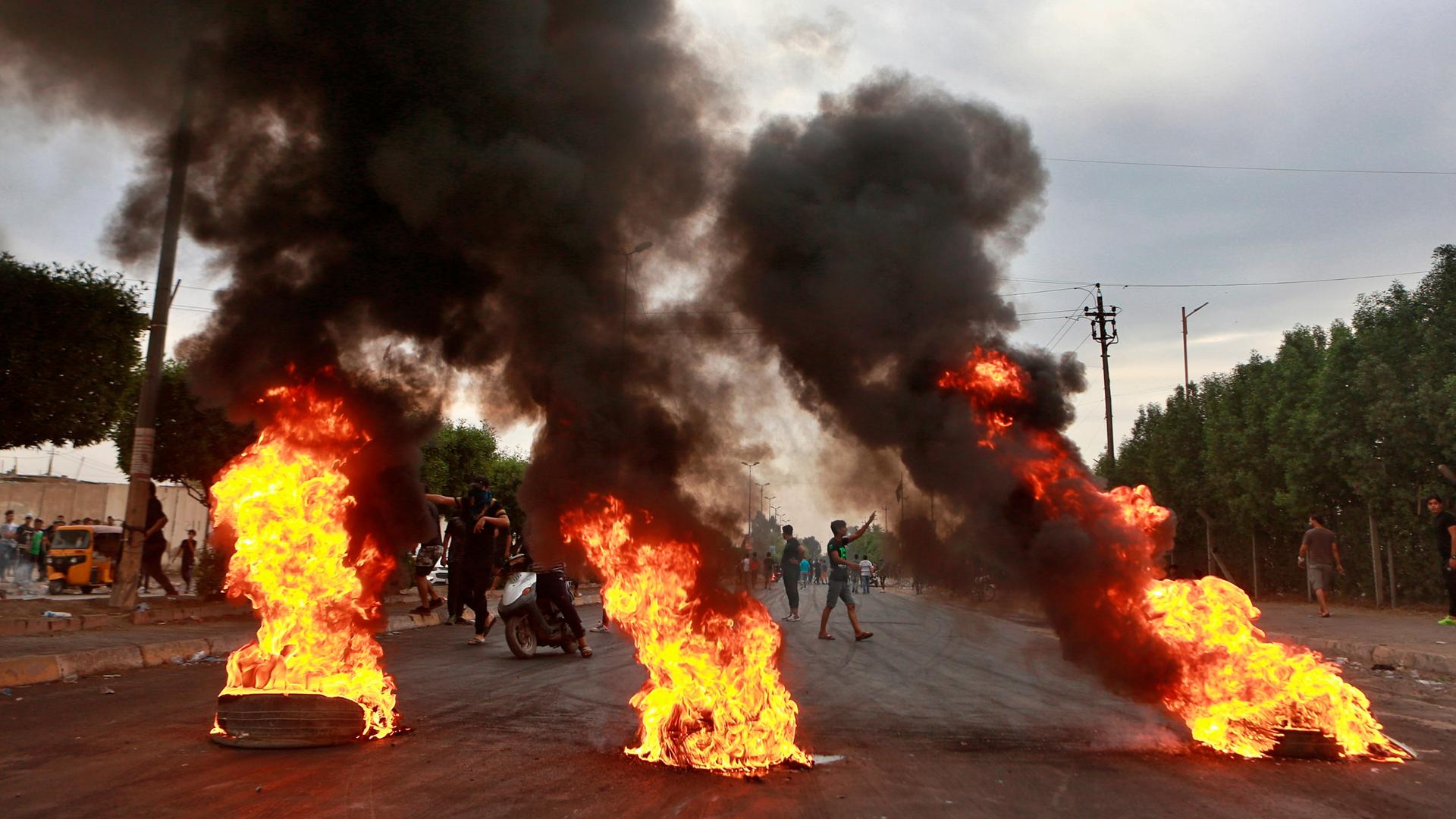The most recent protests differ radically in their demands and the harsh government response has raised the stak.
On the 4th of July 2018, Iraqi rapper I-NZ released “This is Iraq,” inspired by Childish Gambino’s video “This Is America.”
The Iraqi video focused on the effects of the 2003 invasion, ranging from Abu Ghraib to the pillaging of Iraq’s oil, while Gambino’s was a response to police brutality and inequality in the US.
Unfortunately, the same practices in America are being employed in Iraq. Iraqis protesting socioeconomic equality have been met with brutality meted out by the Iraqi state.
Since the 2011 Arab protests Iraqis have taken to the streets, but the most recent cycle is different, as the government response has been harsher, resulting in more than a hundred protester deaths at the hands Iraqi security forces.
Second, since 2011 protesters were calling for the reform of the system and the end to first corruption, and second, foreign interference. This is the first time protesters are not calling for the removal of a sitting prime minister or the formation of a technocratic cabinet, but for an end to the entire post-2003 system.
Shiia masses protesting the Shia elite
The protests were apparently sparked after the dismissal of a popular military commander, Abd al Wahab al Saadi, who commanded the elite Counter Terrorism Force (CTF) that took the lead in defeating Daesh.
Since then, the protesters have expressed frustration that billions of dollars in the country’s oil revenues have been squandered instead of providing jobs, reliable services, such as electricity and water, and adequate health care and schooling. They have focused their ire on the systemic corruption that prevents these demands from being met.
The constituents are Shia by virtue of the geographic locations of the protests. The protesters consist of Shia masses, who have been left behind by the economic system, revolting against the Shia elite.
Rather than seeing the protests through an intra-sectarian lens, the discontent is a product of a generational gap between the elite and a bulging youth demographic. This constituency was mostly born around the 2003 invasion, did not experience the repression of the Saddam Hussein era, but survived the 2006 to 2008 civil war and ensuing Daesh violence. They have no hopes for the future and no job prospects, locked out of an economic system that favours those with political connections to the established post-2003 elite.
While past protests in 2016 were coopted by the Shia cleric Moqtada al Sadr, there does not seem to be any leadership in this uprising. The protests broke out in the predominantly Shia centre and south, such as the Nasiriyya, Najaf and Misan provinces, as well as in the Sadr City district of Baghdad.
In Najaf, the offices of the Dawa and Hikma Shia parties, part of the post-2003 political establishment, were attacked, as well as a failed attempt on the Badr Organization’s headquarters in Nasiriyah.
General Saadi is himself a Shia, but apparently represented a challenge to the Shia militia political forces. The revered Shia cleric Grand Ayatollah Sistani sided with the protesters against Shia Prime Minister Adel Abdul Mahdi.
The protests represent events that transcend the sectarian labels imposed on Iraq, but rather a generation of frustrated Iraqis seeking competent leaders who can simply deliver reliable governance.
Impediments to reform
Incumbent Prime Minister Adel Abd al Mahdi does not have the political mandate to reduce corruption amongst the political parties that brought him to power in the first place as a compromise candidate.
At this point, even installing a technocratic government cannot undo the embedded structural problems that emerged after 2003, where ministries have been captured by political parties, who were allocated these ministries according to sectarian and ethnic quotas.
In 2016 former prime minister Hayder Al Abadi tried the same tactic to no avail, as a result of push back from the established parties.
This week Iraq’s parliament appointed new ministers of health and education in response to the protests, but these cosmetic initiatives will do little to mollify public anger or end endemic corruption within these or other ministries.
Some of the protesters have complained about Iranian influence in the country. Iran has alleged that the protests are a foreign plot, blaming the US and Saudi Arabia for stirring up domestic turmoil in its neighboring country.
Nonetheless this demand to end foreign interference, like the demand to end corruption will not end anytime soon, at least under a Trump administration, as Iranian influence will remain paramount in Iraq as a buffer against American threats to the Islamic Republic.
Tragically, two years after the victory against the Daesh, the optimism that Iraq would inherit a peace dividend has faded.
The Iraqi state had not only faltered in the reconstruction and resettlement of territories that were ruled by Daesh but has failed to provide hope for its other citizens in the centre and south of the country, particularly the city of Basra which had its own sustained protests in the summer of 2018.
While Iraq has passed the tragic phase of daily violence, enduring the post-2003 insurgency and the rise of Daesh, providing governance during its hard-earned peace has proven to be equally daunting.
Author: Ibrahim Al Marashi
Ibrahim al-Marashi is an associate professor at the Department of History, California State University, San Marcos. He is the co-author of The Modern History of Iraq, 4th edition.
Source










Discussion about this post